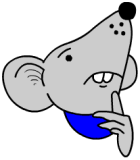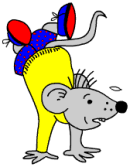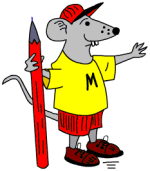 Some more examples of the type of arithmetic questions that come up in the SATs. An interesting example is the question which asks to put the digits 7, 3 and 4 into the boxes to make the total of 41.
Some more examples of the type of arithmetic questions that come up in the SATs. An interesting example is the question which asks to put the digits 7, 3 and 4 into the boxes to make the total of 41.
Sometimes there is more than one way to do this type of question and it is a matter of using ‘trial and improvement’ to solve it.
One good way to tackle it is to look at the units (in this case 1) and see which two digits added together will put a 1 in the units. The only option here is is to add the digits 7 and 4 (which make 11), put these in the units boxes and it is easy from there on.
 This maths worksheet is a real test of understanding. Remember these key facts about rounding numbers:
This maths worksheet is a real test of understanding. Remember these key facts about rounding numbers: “High-quality direct teaching is oral, interactive and lively. It is not achieved by adopting a simplistic formula of ‘drill and practice’, or by expecting pupils to teach themselves from books. It is a two-way process in which pupils are expected to play an active part by answering questions, contributing points to discussions, and explaining and demonstrating their methods to the class.”
“High-quality direct teaching is oral, interactive and lively. It is not achieved by adopting a simplistic formula of ‘drill and practice’, or by expecting pupils to teach themselves from books. It is a two-way process in which pupils are expected to play an active part by answering questions, contributing points to discussions, and explaining and demonstrating their methods to the class.” By the end of year 6 children should know and be able to read, write and use the following words:
By the end of year 6 children should know and be able to read, write and use the following words: Plenty of opportunity with these two free maths worksheets to consolidate understanding of subtraction and the use of positive and negative numbers. By year 6 children should find these pretty straightforward although some children do struggle with the concept of a negative number and will always take the smaller number from the larger number even when the question asks for the opposite (eg 1234 – 4321).
Plenty of opportunity with these two free maths worksheets to consolidate understanding of subtraction and the use of positive and negative numbers. By year 6 children should find these pretty straightforward although some children do struggle with the concept of a negative number and will always take the smaller number from the larger number even when the question asks for the opposite (eg 1234 – 4321). Just one maths worksheet with just 8 questions, but be warned this might prove to be tricky for most 10 or 11 years old children. At least two operations are needed to find the answer, and as I have said before this causes most children a fair amount or difficulty. This is where logical thinking comes in: what to do first in order to make it possible to move on to the second step.
Just one maths worksheet with just 8 questions, but be warned this might prove to be tricky for most 10 or 11 years old children. At least two operations are needed to find the answer, and as I have said before this causes most children a fair amount or difficulty. This is where logical thinking comes in: what to do first in order to make it possible to move on to the second step. Wow! Now this does need some concentration, but is by no means impossible.
Wow! Now this does need some concentration, but is by no means impossible. Not only maths but some fascinating population facts thrown in as well. Why not try to find these South American countries whilst rounding their populations to the nearest million?
Not only maths but some fascinating population facts thrown in as well. Why not try to find these South American countries whilst rounding their populations to the nearest million?